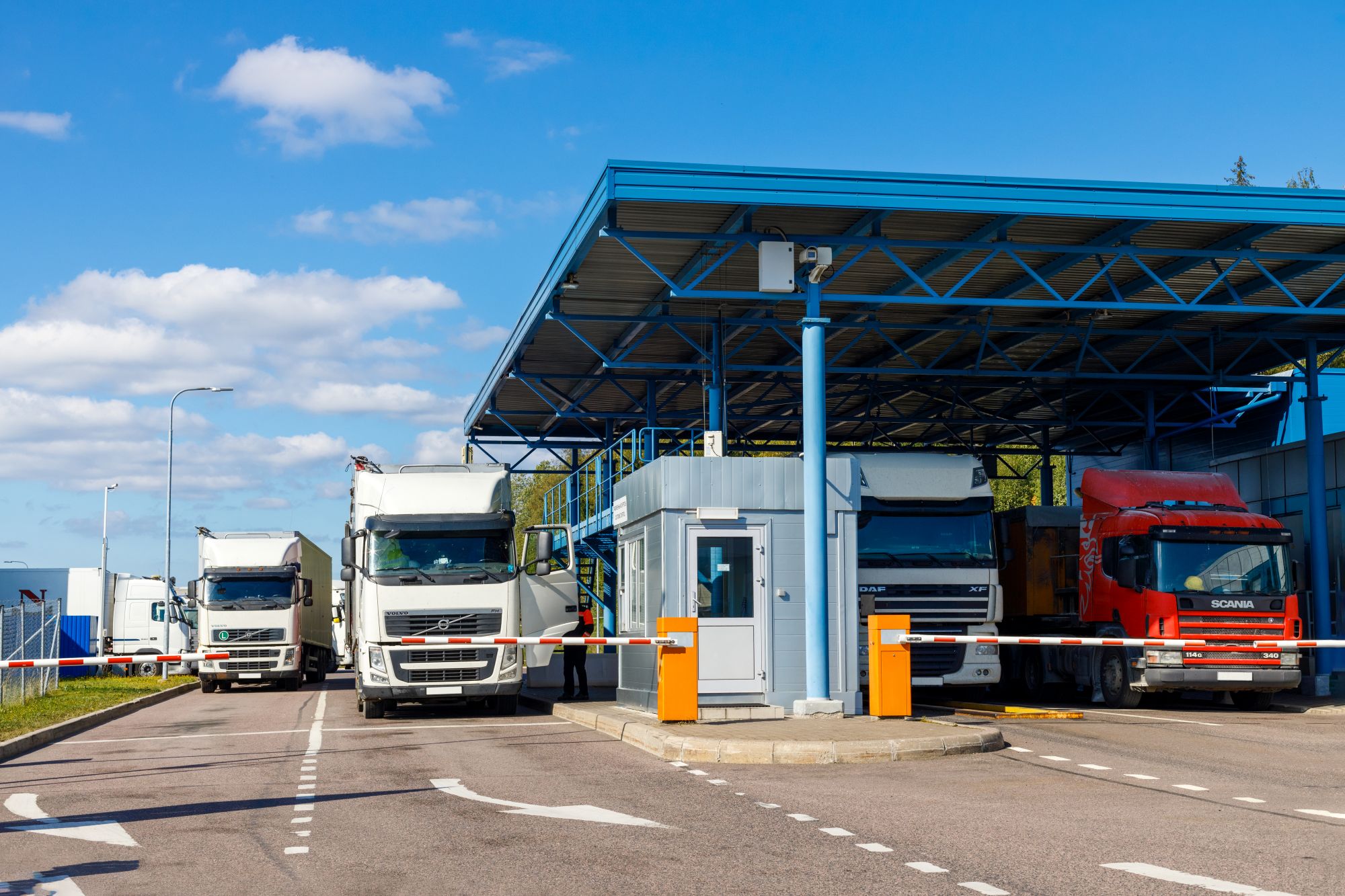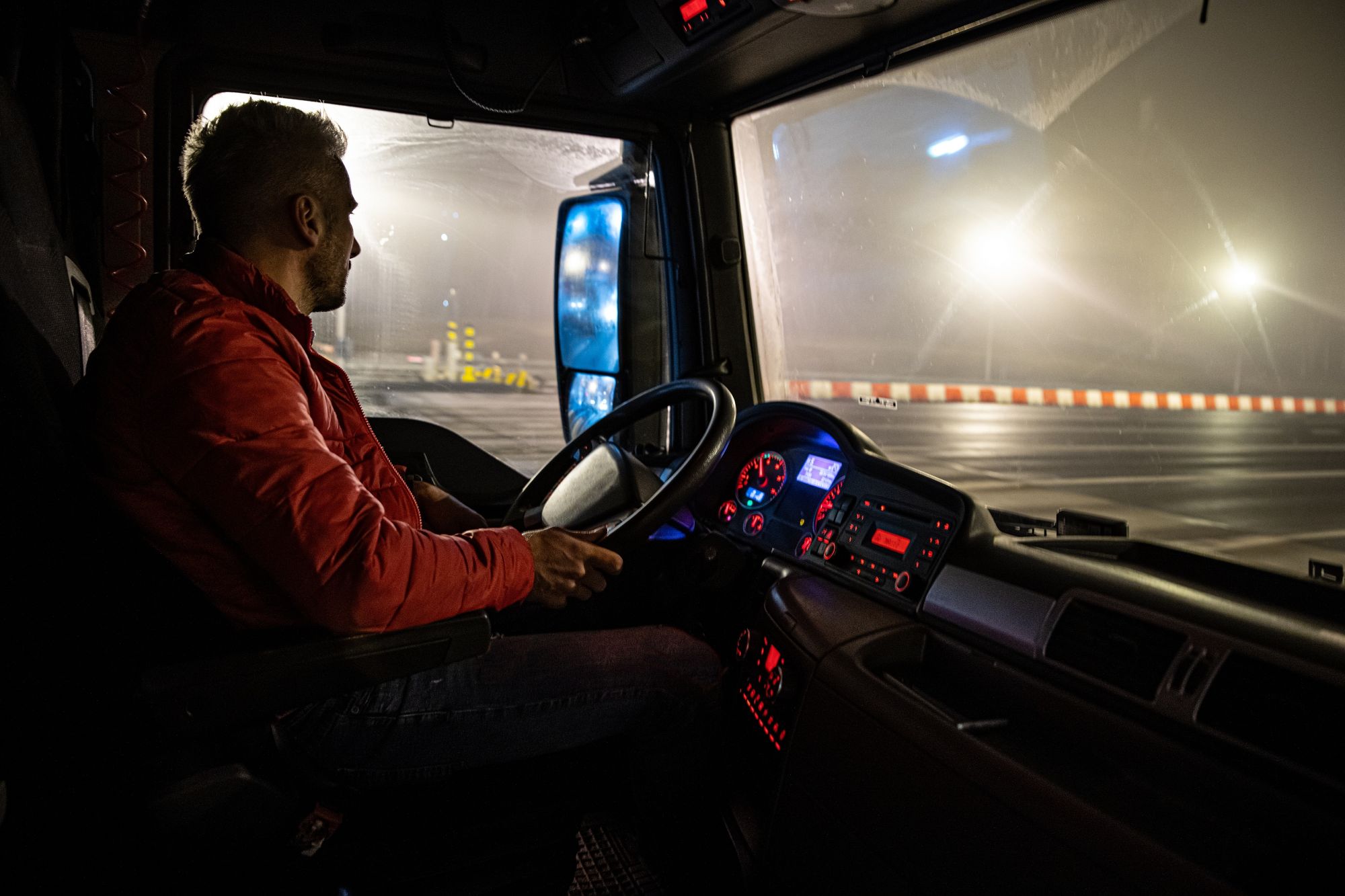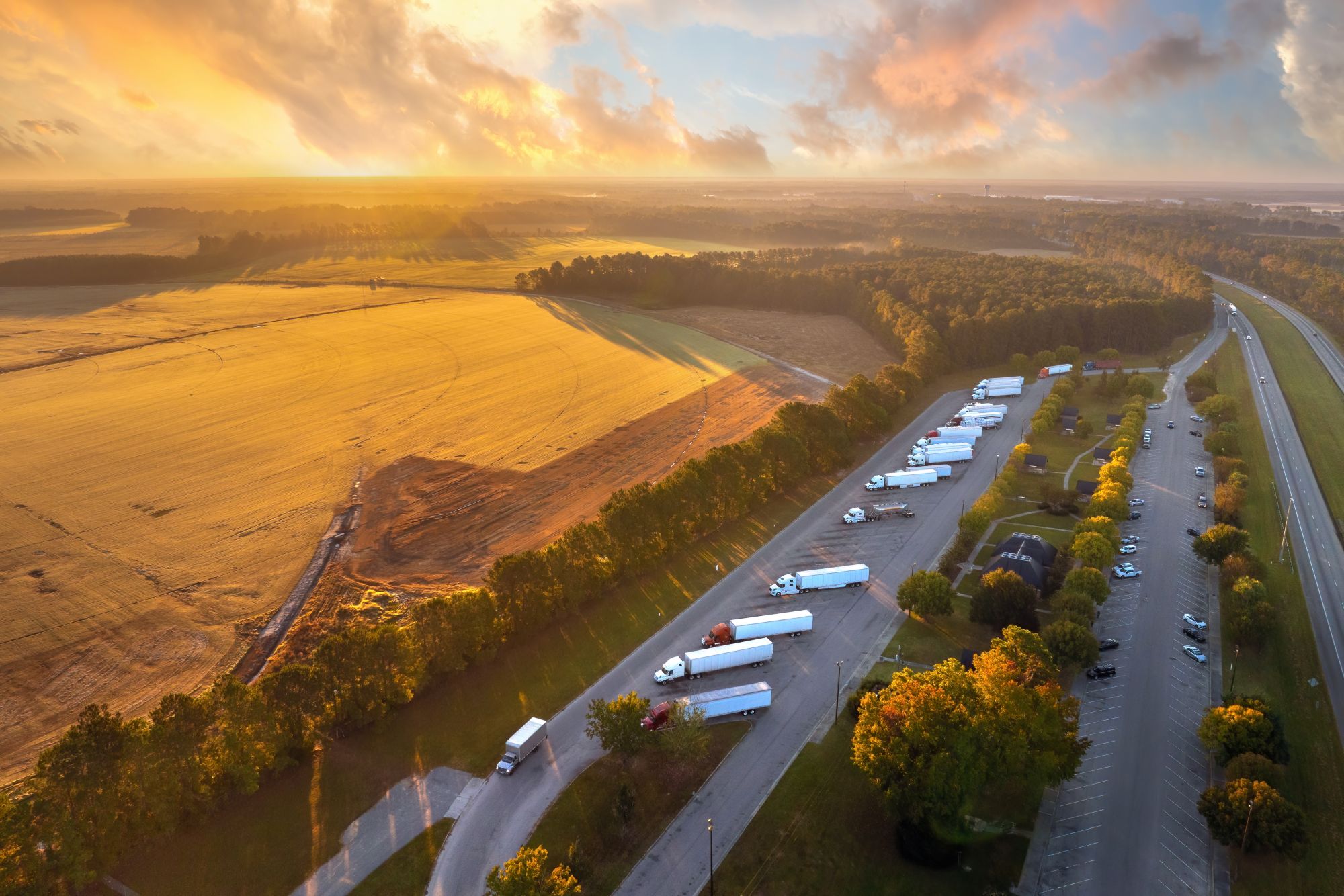
Guest
Poľsko-ukrajinská hranica je opäť otvorená: Čo by mali vedieť prevádzkovatelia vozového parku
Vytvorené: 18. 06. 2025
•
Aktualizované: 20. 06. 2025
Po mesiacoch prerušenia sa nákladná doprava medzi Poľskom a Ukrajinou opäť voľne pohybuje. Keďže však napätie stále pretrváva a všetci myslia na hrozbu obnovenia blokád, prevádzkovatelia vozových parkov musia byť naďalej ostražití a pripravení chrániť blaho vodičov na oboch stranách hranice.
Tento článok vysvetľuje, čo bolo príčinou prerušenia, ako ovplyvnilo vodičov a aké kroky môžete podniknúť, aby ste znížili jeho vplyv, ak sa protestné akcie vrátia.
Čo spôsobilo blokádu poľsko-ukrajinskej hranice v roku 2024?
Situácia sa začala koncom roka 2023, keď poľskí vodiči kamiónov začali protestovať na hlavných hraničných priechodoch. Tvrdili, že rozhodnutie EÚ zrušiť požiadavky na povolenia pre ukrajinských dopravcov - zavedené ako dočasné vojnové opatrenie - viedlo k prílevu lacnejších dopravcov, ktorí podrážali ceny poľských firiem.
Protesty sa vystupňovali, zablokovali kľúčové nákladné trasy na Ukrajinu a tisíce vozidiel uviazli v kilometrových kolónach. Na vrchole blokády uviazlo na hraniciach viac ako 5 000 nákladných vozidiel a niektoré z nich čakali na prejazd viac ako týždeň. Aj neukrajinskí vodiči z EÚ trpeli dlhými meškaniami, napätými plánmi a zlými podmienkami.
To, čo sa začalo ako logistický spor, prerástlo do širšieho protestu poľských autodopravcov proti ukrajinskému dovozu, prístupu na trh a vplyvu mimoriadnych dopravných opatrení EÚ. Čoskoro sa pridali aj poľskí poľnohospodári, ktorí boli frustrovaní vplyvom ukrajinských poľnohospodárskych výrobkov na domáce ceny.
Poľskí vodiči tiež kritizovali ukrajinský elektronický systém radenia do front pre hraničné priechody - známy ako eCherha - a tvrdili, že znevýhodňuje dopravcov z EÚ. Hoci bol systém navrhnutý na zefektívnenie pohybu nákladu tým, že umožňoval dopravcom vopred si rezervovať miesta na prechode, poľskí dopravcovia tvrdili, že poskytoval ukrajinským firmám väčšiu flexibilitu a rýchlejší prístup. Problémy ako jazykové bariéry, obmedzená integrácia s logistickými systémami EÚ a nedôsledná implementácia spôsobili, že mnohí vodiči z EÚ čakali na hraniciach dlhšie, čo ešte viac posilnilo pocit nespravodlivého zaobchádzania a prispelo k širším nepokojom.
Časová os blokád poľsko-ukrajinskej hranice
Listopad 2023: Protesty sa začínajú na hraničných priechodoch Dorohusk, Hrebenne a Korczowa.
December 2023: Zablokované sú ďalšie priechody vrátane Mediky; traja ukrajinskí vodiči zomierajú pri čakaní v kolónach.
Január 2024: Poľská vláda sa dohodla na pozastavení blokády do marca.
Březen-apríl 2024: Občasné blokády sa obnovia na menších priechodoch.
Máj 2025: Začala sa nová štvormesačná blokáda Yahodyn-Dorohusk, ale súd ju zrušil.
Červen 2025: Všetky hlavné hraničné priechody zostávajú otvorené, ale riziko narušenia v budúcnosti pretrváva.
Čo robí poľská vláda na zlepšenie situácie?
Poľská vláda v reakcii na narušenie a jeho širšie dôsledky zaujala aktívny postoj. Hraničné priechody s Ukrajinou boli označené za kritickú infraštruktúru, čo im poskytuje väčšiu ochranu pred budúcimi blokádami a pomáha zabezpečiť nepretržitý tok nákladu, humanitárnej pomoci a vojenskej podpory.
Bola zriadená aj nová Rada pre spoluprácu s Ukrajinou, ktorej cieľom je všeobecne posilniť väzby medzi oboma krajinami. Jej úlohou je zlepšiť koordináciu v oblasti obchodu a dopravy. Poľsko zároveň investuje do infraštruktúry na východnej hranici a spolupracuje s úradníkmi EÚ s cieľom presadiť spravodlivejšie podmienky pre poľských dopravcov. Hoci tieto opatrenia nemusia vyriešiť situáciu zo dňa na deň, signalizujú dlhodobý záväzok k stabilite a štruktúrovanému dialógu.

Vplyv na vodičov
Blokáda vytvorila neprijateľné podmienky pre profesionálnych vodičov. Mnohí z nich strávili dni alebo týždne vo svojich kabínach bez prístupu k toaletám, jedlu alebo tečúcej vode. Niektorí uviazli v mrazivých teplotách bez kúrenia alebo prístrešia.
Traja ukrajinskí vodiči zomreli počas blokády, pričom sa predpokladá, že k tomu prispelo vyčerpanie a neliečený zdravotný stav.
Narušenie spôsobilo aj značnú psychickú a emocionálnu záťaž, najmä pre ukrajinských vodičov, ktorí sa počas vojny snažili dostať domov alebo sa z neho vrátiť. Oneskorenia ovplyvnili nielen obchod, ale aj pohyb pohonných hmôt, pomoci a vojenského tovaru, ktorý je dôležitý pre národnú obranu Ukrajiny.
Hoci poľskí demonštranti trvali na tom, že vozidlá humanitárnej a vojenskej pomoci môžu prechádzať cez hranice, správy ukrajinských orgánov naznačujú, že to tak vždy nebolo.
Tieto podmienky neboli traumatizujúce len pre vodičov, ale odhalili aj nedostatky v riadení rizík vozového parku a plánovaní pre prípad mimoriadnych udalostí. Prevádzkovatelia musia teraz narúšanie hraníc považovať za trvalú hrozbu.
Čo musia vedieť prevádzkovatelia vozového parku
Hoci sa situácia stabilizovala, základné napätie medzi poľskými dopravcami, ukrajinskými prevádzkovateľmi a politikou EÚ zostáva nevyriešené. Manažéri vozových parkov pôsobiaci v tomto regióne alebo v jeho blízkosti by mali byť ostražití, pokiaľ ide o možnosť ďalších protestných akcií - najmä počas sezónnych tlakových bodov alebo revízií politiky EÚ.
Tu sú odporúčania tímu SNAP na efektívne zvládnutie situácie:
1. Monitorovanie situácie na poľsko-ukrajinskej hranici
Sledujte aktuálne správy z poľských a ukrajinských logistických združení a vládnych zdrojov. Prihláste sa na odber upozornení o pohraničnej premávke a sledujte dôveryhodných logistických partnerov, ktorí vám poskytnú aktuálne informácie v reálnom čase.
2. Plánujte flexibilné trasy
Pripravte si pohotovostné plány, ktoré presmerujú vozidlá cez Maďarsko, Slovensko alebo Rumunsko, ak sa prechody medzi Poľskom a Ukrajinou opäť zablokujú.
3. Podpora blahobytu vodičov
Zabezpečte, aby boli vaše nákladné vozidlá vybavené základnými potrebami: potravinami, vodou, powerbankami a lekárničkami.
V období nepokojov je prístup k bezpečnému parkovisku pre nákladné vozidlá v Poľsku nevyhnutný, aby vaši vodiči boli v bezpečí, oddýchnutí a mimo ciest. Vybavte vodičov aktuálnymi informáciami o bezpečných parkoviskách pre nákladné vozidlá a oddychových zónach pozdĺž ich trasy.
Naša aplikácia intruck obsahuje interaktívnu mapu parkovísk pre nákladné vozidlá s 11 000 poskytovateľmi služieb pre nákladné vozidlá v celej Európe vrátane Poľska, Maďarska a Slovenska. Je to ľahko použiteľný nástroj na vyhľadávanie bezpečných odpočívadiel pre nákladné vozidlá v Poľsku, vďaka čomu je obzvlášť cenný v období protestných akcií.
Hoci aplikácia v súčasnosti neponúka možnosť rezervácie parkovania pre nákladné vozidlá na Ukrajine, ukrajinskí prevádzkovatelia a vodiči môžu pomocou aplikácie intruck vyhľadať spoľahlivé odpočívadlá v rámci EÚ počas diaľkových ciest alebo v čase prerušenia prevádzky.
4. Rezervujte si bezpečné parkovanie pre nákladné vozidlá v Poľsku
Vzhľadom na zvýšený dopyt v obdobiach prerušenia prevádzky je veľmi dôležitá rezervácia vopred. Vodiči si môžu pomocou služby intruck vopred vyhľadať a rezervovať dôveryhodné parkovisko pre nákladné vozidlá v Poľsku. Bez ohľadu na to, či vaše vozidlá cestujú hlboko do východnej Európy alebo sa vracajú na západ, umožňuje vašim vodičom prístup k parkovaniu pre nákladné vozidlá v blízkosti Varšavy a iných oblastí s vysokou premávkou.
5. Pravidelne komunikujte s vodičmi
Stanovte harmonogramy odbavenia, najmä ak sa očakáva dlhé čakanie alebo odklonenie. Ubezpečte vodičov, že ich pohoda je prioritou, a poskytnite im podporu v prípade neočakávaného meškania. Ak je to možné, vopred navrhnite bezpečné parkovacie miesta pre nákladné vozidlá na Ukrajine, aby vedeli, kde si môžu oddýchnuť.
Pohľad do budúcnosti
Opätovné otvorenie poľsko-ukrajinskej hranice je vítanou správou pre flotily pôsobiace vo východnej Európe. Vzhľadom na nevyriešené politické napätie je však nevyhnutné zostať pripravený.
"Situácia sa rýchlo mení," hovorí Nick Renton, vedúci európskej stratégie a rozvoja podnikania v spoločnosti SNAP. "Vzhľadom na možnosť ďalšieho narušenia poľsko-ukrajinských hraníc odporúčame prevádzkovateľom vozových parkov, aby zaviedli spoľahlivé plány na uprednostnenie dobrých životných podmienok vodičov a minimalizáciu prevádzkových rizík. To zahŕňa zavedenie flexibility do harmonogramov dodávok, zabezpečenie základných zásob vo vozidlách a zabezpečenie prístupu vodičov k bezpečnému parkovaniu nákladných vozidiel.
"Naša sieť rezervovateľných zastávok pre nákladné vozidlá v Európe a Poľsku vám poskytuje nástroje, ktoré vám umožnia zostať flexibilní - ponúka pokoj prevádzkovateľom aj vodičom, keď sa podmienky na zemi stanú nepredvídateľnými."
Pozrite si našu interaktívnu mapu bezpečné parkovanie nákladných vozidiel v Poľsku dnes.



